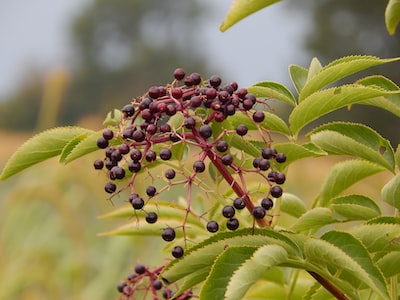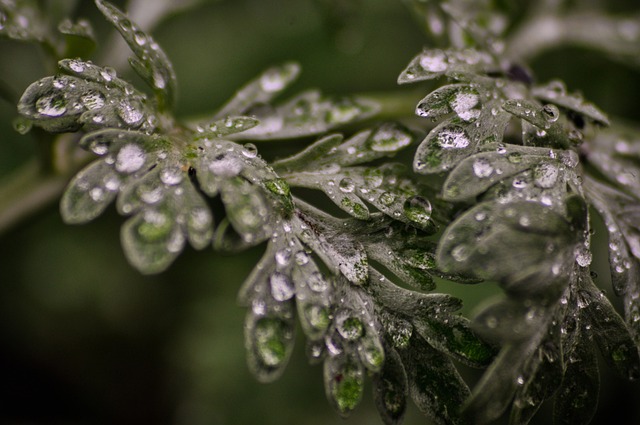Growing Winter Squash: Pro Tips for a Healthy, Ample Harvest

Growing Winter Squash
Growing winter squash begins with rich, well-drained soil, full sun, and generous spacing to allow sprawling vines room to roam. Sow seeds directly outdoors after frost danger passes, planting an inch deep and several feet apart. To savor sweet butternuts, acorns, and hubbards all winter long, read on for tips and timing on growing winter squash like a seasoned gardener.
Cheatsheet: Mastering Winter Squash in Your Garden
🌱 Varieties to Grow
- Butternut, Acorn, Kabocha, Delicata
- Avg. 15–30 lbs (7–14kg) yield per plant
- Boosts fiber, vitamins A & C
🛠 Tools and Products You'll Need
- Seeds or healthy starts
- Trowel, hoe, or hand fork
- Compost, well-rotted manure
- Soaker hose or watering can
- Mulch (straw or composted leaf)
- Organic fertilizer
- Pruning shears (optional)
- Garden gloves
🌡️ Soil & Site
- Full sun; 6–8 hrs/day
- pH: 6.0–6.8, loose, fertile soil
- Soil temp: 70–95°F (21–35°C) for planting
🗓️ Planting Steps
- Prep: Work 3” (8cm) compost into soil. Form hills 4–6 ft (1.2–1.8m) apart.
- Sow: Direct sow 1” (2.5cm) deep after last frost. 3 seeds per hill, thin to 1-2 strongest.
- Water: Keep soil consistently moist—1–2” (2.5–5cm) per week.
- Mulch: Apply mulch to retain moisture and suppress weeds.
- Feed: Side-dress with organic fertilizer at vining and flowering.
- Train: Direct vines to save space; trim tips if needed for bigger fruit.
- Protect: Use row cover to block squash vine borer; remove at flowering for pollination.
🐝 Health & Pollination
- Encourage bees: plant flowers nearby
- Hand-pollinate if fruit aborts
- Monitor for powdery mildew & squash bugs—remove affected leaves, use neem or insecticidal soap if needed
⏳ Harvest & Storage
- Harvest when rinds harden & skins dull; before frost
- Cure 10–14 days at 80°F (27°C), 60% humidity
- Store up to 6 months at 50–55°F (10–13°C) in dry, dark place
🌟 Pro Tips
- Rotate crops yearly—reduce soil-borne disease
- Remove all weeds—squash hates crowding
- Check for ripeness: press nail into rind—it should resist
- Self-sufficiency: 5 plants feeds a family all winter
Choosing the Perfect Spot for Growing Winter Squash
The first time I decided to grow winter squash, I underestimated how much sunlight these beauties crave. Winter squash plants thrive in full sun—at least 6 to 8 hours daily—so select a spot accordingly.
I learned this lesson the hard way; my initial crop languished in partial shade, producing sad, undersized squash. Never again.
Preparing the Soil
Winter squash plants are heavy feeders and adore nutrient-rich, well-draining soil. A few weeks before planting, I always work in plenty of compost or well-aged manure.
This boosts soil fertility and provides a steady supply of nutrients to fuel vigorous growth.
Good soil is half the battle—give your winter squash a solid foundation, and they'll reward you generously come harvest time.
Selecting Your Winter Squash Variety
There’s no shortage of wonderful winter squash varieties out there: butternut, acorn, spaghetti, delicata, and even the mighty Hubbard. Personally, I have an affection for butternut—easy-going, sweet, versatile in the kitchen, and a superb keeper.
Whichever variety you pick, ensure it's suited to your growing season and space availability. Some, like Hubbard, spread vigorously, demanding ample garden real estate.
Planting and Spacing Winter Squash Seeds
Timing matters. Direct-sow winter squash seeds outdoors only once the soil temperature reaches around 60°F (15°C)—typically 2-3 weeks after your area's last frost date.
Here's the method I've perfected over the years:
- Form small planting hills about 6 inches (15 cm) high and 24 inches (60 cm) across, spaced roughly 4 to 6 feet (120 to 180 cm) apart. Good airflow helps squash stay healthy.
- Plant 4-5 seeds per hill, pushing them down about an inch (2.5 cm) deep into the loose soil.
- Once seedlings emerge and develop their first true leaves, thin out weaker sprouts, leaving two to three strong plants per hill.
Watering and Mulching Your Squash Garden
Squash plants prefer consistent moisture. Aim for about an inch (2.5 cm) of water weekly, or more during blistering heat.
Mulching around plants has been a lifesaver for me—it conserves moisture, suppresses weeds, and prevents fruit rot by keeping squash off damp soil. Straw, shredded leaves, or grass clippings work beautifully.
Managing Pests and Diseases
Ah, pests—the bane of my squash-growing existence. Squash bugs and vine borers can quickly devastate your crop.
But fear not; I've discovered a few reliable solutions:
- Check undersides of leaves regularly and hand-pick off squash bug egg masses (little bronze-colored clusters).
- Wrap squash stem bases with aluminum foil collars to prevent vine borers from laying eggs.
- Interplant companion flowers—such as marigolds or nasturtiums—to attract beneficial insects and ward off pests.
Harvesting and Curing Your Winter Squash
Here's my golden rule: winter squash should be harvested once their rinds become tough enough to resist puncturing with a fingernail. Mature color and a dry, firm stem are also reliable signs.
To enhance storage life, cure harvested squash by leaving them in a warm, sunny location for about 10 to 14 days, ideally around 80-85°F (26-29°C). This curing step thickens the skin and sweetens the flesh, making them even more delicious.
With a little attention and care, growing winter squash rewards us gardeners with abundant, delicious harvests that can last well into winter and beyond.
Frequently Asked Questions About Growing Winter Squash
What is the ideal planting time for winter squash?
Plant your winter squash seeds outdoors once the soil temperature warms consistently above 60°F (15°C), usually 2-3 weeks after the last anticipated frost. Early summer planting provides ample time for squash fruits to mature fully before autumn frosts.
How much space should winter squash plants have?
Winter squash vines spread extensively, so provide each plant with ample growing room. Allow about 4-6 feet (1.2-1.8 meters) between hills or seed clusters, and space rows 6-8 feet (1.8-2.4 meters) apart for healthy growth and optimal production.
What soil conditions promote healthy winter squash growth?
Winter squash thrives in fertile, well-drained soil rich in organic matter. Prior to planting, enrich garden beds by incorporating compost or aged manure deeply into the soil to support abundant fruit set and vigorous vine growth.
How frequently should winter squash plants be watered?
Provide regular, thorough watering to encourage deep root development, especially during dry periods. Approximately 1 inch (2.5 cm) of water weekly—delivered at ground level rather than overhead—is sufficient for optimal growth, fruit formation, and disease prevention.
How can winter squash pests be effectively managed?
Manage common pests, including squash bugs and cucumber beetles, through consistent inspection and prompt removal by hand. Introduce beneficial insects, like ladybugs, into your garden to naturally control pest infestations. To minimize diseases, practice crop rotation and avoid overhead irrigation.
When and how do you determine if winter squash is ripe for harvesting?
Mature winter squash typically presents a hard rind resistant to fingernail scratches, along with rich, uniform skin coloration. Harvest before the first frost arrives by cutting the fruit from vines, leaving about 2 inches (5 cm) of stem attached, ensuring better storage longevity.
What is the proper way to store harvested winter squash?
Store harvested winter squash in a cool, dark place with temperatures between 50-55°F (10-13°C) and humidity around 50-70 percent. Properly cured and stored squash varieties can last from 2 to 6 months, depending on variety and storage conditions.
Growing winter squash rewards patience and a bit of grit. Start with rich soil, keep your plants well-fed, and give them room to sprawl. Stay one step ahead of pests, and let the vines soak up the summer sun. Wait until those skins are tough before you harvest—rushing means bland, watery fruit. Store them somewhere cool and dry, and you’ll have hearty meals long after the first frost. If this season’s patch inspires you to branch out, growing pumpkins or trying your hand at zucchini can scratch that itch. In the end, growing winter squash is about working with nature, not against it. The reward? Flavor that’s worth the effort, and a pantry stocked for winter.
The Homesteader's Take: Practical Strategies for Winter Squash Self-Sufficiency
Grow Varieties for Nutrient Density & Longevity
- Butternut: High vitamin A, long shelf-life (4–6 months).
- Acorn Squash: Rich in dietary fiber, stores well (1–3 months).
- Hubbard Squash: Excellent beta-carotene, extended storage (up to 6 months).
Extend Harvest with Strategic Succession Planting
Sow early-season varieties (like Delicata) mid-spring, followed by late-season (such as Blue Hubbard) early summer, spreading harvests over months.
Companion Planting for Natural Pest Control
- Nasturtiums: Repel squash bugs.
- Radishes: Deter cucumber beetles.
- Borage: Attract pollinators vital for squash fruit set.
Seed Saving for True Self-Reliance
Select mature squash from healthiest plants. Scoop, rinse, fully dry seeds (7–14 days), store in labeled envelopes in cool, dry place for next year's planting.
Maximized Nutrition from Squash Storage
Store harvested squash in cool (50–55°F / 10–13°C), dry, dark space to retain maximum nutrients. Rotate periodically, inspect weekly to promptly remove deteriorating fruit.
Heading 1
Heading 2
Heading 3
Heading 4
Heading 5
Heading 6
Lorem ipsum dolor sit amet, consectetur adipiscing elit, sed do eiusmod tempor incididunt ut labore et dolore magna aliqua. Ut enim ad minim veniam, quis nostrud exercitation ullamco laboris nisi ut aliquip ex ea commodo consequat. Duis aute irure dolor in reprehenderit in voluptate velit esse cillum dolore eu fugiat nulla pariatur.
Block quoteOrdered list
- Item 1
- Item 2
- Item 3
Unordered list
- Item A
- Item B
- Item C
Bold text
Emphasis
Superscript
Subscript
Find out which plants will thrive in your garden!
Answer a few fun questions and get custom plant recommendations perfect for your space. Let’s grow something amazing together!

start your season





